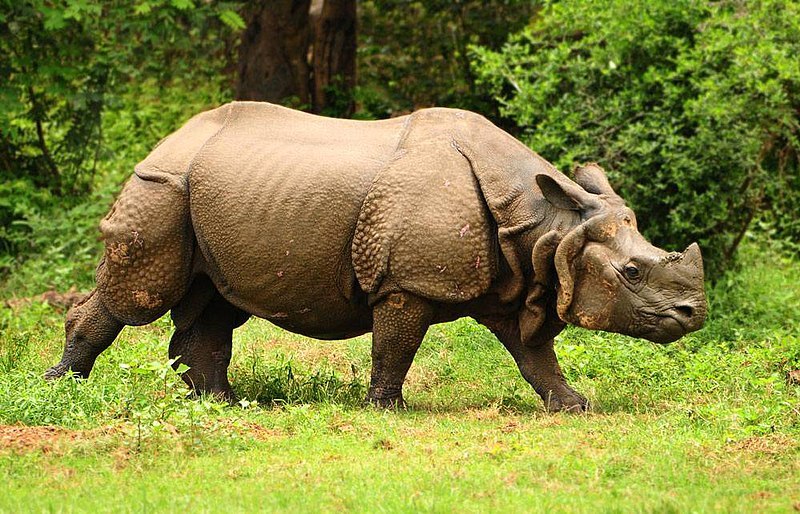Guwahati: A class 4 mathematics textbook has unexpectedly sparked controversy, moving beyond the typical debates associated with NCERT history texts.
Concerns have been raised by many over a rhinoceros illustration in the textbook, which reportedly contains multiple errors, a problematic statement, and incorrectly depicts the single-horned Indian rhino with two horns.

“In the recently published NCERT Class 4 maths textbook, an Indian rhino is shown to have two horns (Pg 45). Such mistakes are not acceptable in an NCERT textbook,” posted Udoy Bhaskar Borah on X.
“The Indian rhinoceros is found in the foothills of the Himalayas in Northeast India. Floods and medicinal value of their horns have led to a reduction in their population. In the early 1900s, their population was driven to near extinction with as little as 200 rhinoceroses. But with recent conservation measures, there are now around 4000 (four thousand) rhinoceroses,” says the NCERT textbook.
Many have highlighted that apart from the illustrations, the around 400-word text is also problematic and contains multiple instances of misinformation.
Assam-based conservationist Bibhab Kumar Talukdar, the secretary general and CEO of Aaranyak and a renowned rhino conservation biologist working on three species of Asian Rhinos, said that depicting an Indian rhino with two horns might be called a careless mistake and that the editors should have checked it.
Talukdar also pointed out several other errors in the text.
He further stated that the text completely omitted the fact that the largest population of rhinoceroses resides in the alluvial plains of the Brahmaputra in Assam, emphasizing that the one-horned rhino is the state animal of Assam.
“The NCERT textbook has also portrayed floods, along with poaching, as a villain threatening the rhinos. However, floods are a natural phenomenon that is a natural process that helps the species through natural selection,” Talukdar said.
Concerns have also been raised about the NCERT class 4 maths textbook spreading misinformation by attributing “medicinal value” to rhino horns, the very reason these animals have been heavily poached.
“The NCERT book also mentions that rhino horn has medicinal value. This wrong content may promote illegal killing of rhinos for their horn,” said Talukdar.
ALSO READ: Assam prodigy Sprihaa Hrishi Kashyap clinches gold at 2nd Asian Yogasana Sports C’ship
According to the International Rhino Foundation, the greatest threat to all five rhino species is poaching for their horns.
Trade in rhino horn was banned in 1977 by the Convention on International Trade in Endangered Species of Wild Fauna and Flora (CITES).















